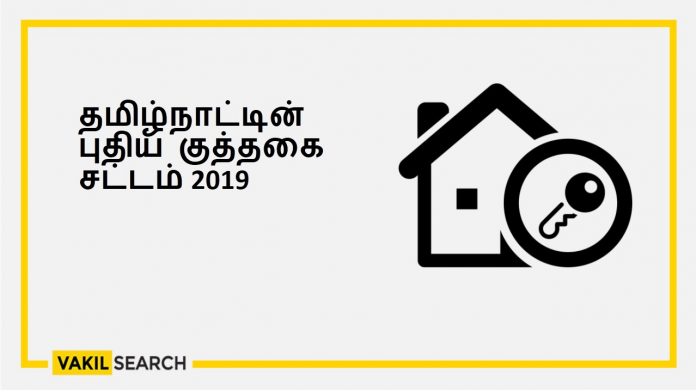A lease agreement, a leave agreement and a license agreement are three different types of agreements that can be made by both an individual and a company.
Overview
Lease agreements, leave agreements, and license agreements are legal instruments that define the terms and conditions under which various arrangements are made between parties. Each agreement serves a distinct purpose, governing matters related to property, rentals, or the usage of intellectual property.
Understanding the differences among these agreements is crucial to ensuring that the rights and responsibilities of all parties involved are clearly outlined and legally binding. But first, back to the basics.
What Is a Lease Agreement?
A lease agreement, also known as a rental agreement or lease contract, is a legally binding document that outlines the terms and conditions between a landlord (the property owner) and a tenant (the individual or business renting the property). This agreement establishes the rights and responsibilities of both parties during the lease term.
Key elements typically included in a lease agreement are:
- Names of Parties: Identifies the landlord and tenant, providing their legal names and contact information.
- Property Description: Clearly describes the rented property, including its address and any specific details regarding the unit or space being leased.
- Lease Term: Specifies the duration of the lease, whether it’s a month-to-month arrangement or a fixed-term lease for a specific number of months or years.
- Rent Amount and Due Date: States the monthly rent amount, when it is due, and the acceptable methods of payment. It may also include details about late fees.
- Security Deposit: Outlines the amount of the security deposit, conditions for its refund, and any deductions that may be made.
- Maintenance and Repairs: Defines the responsibilities of the landlord and tenant regarding property maintenance, repairs, and any associated costs.
- Utilities and Services: Specifies which utilities or services are included in the rent and which are the tenant’s responsibility.
- Use of Property: Outlines how the property can be used, any restrictions on alterations, and whether subletting is allowed.
- Termination and Renewal: Explains the process for terminating the lease, including notice periods and any renewal options.
- Rules and Regulations: Includes any specific rules or regulations governing the property, such as those related to noise, pets, or other conduct.
- Disclosures: Provides information required by law, such as lead paint disclosures or other relevant property information.
| Lease agreements help establish a clear understanding between landlords and tenants, reducing the likelihood of disputes and providing a legal framework for the rental arrangement. It’s essential for both parties to thoroughly review and understand the terms of the lease before signing. |
What Is a Leave Agreement?
A Leave and License Agreement is a legal document that outlines the terms and conditions under which a property owner (licensor) grants permission to another party (licensee) to use or occupy the property for a specified period. This type of agreement is commonly used for residential or commercial property rentals in India.
Key components typically included in a Leave and License Agreement are:
- Parties Involved: Identifies the licensor (property owner) and licensee (individual or entity renting the property) with their relevant details.
- Property Description: Clearly describes the rented property, including its address, specific details about the premises, and any associated amenities.
- License Period: Specifies the duration of the license, whether it’s a fixed-term license or a periodic license (e.g., month-to-month).
- License Fee: States the amount of the license fee (rent), the frequency of payment, and the acceptable methods of payment.
- Security Deposit: Outlines the amount of the security deposit, conditions for its refund, and any deductions that may be made.
- Permitted Use: Defines the purpose for which the property can be used, any restrictions, and whether subletting is allowed.
- Maintenance and Repairs: Outlines the responsibilities of the licensor and licensee regarding property maintenance, repairs, and associated costs.
- Utilities and Services: Specifies which utilities or services are included in the license fee and which are the responsibility of the licensee.
- Termination: Explains the circumstances under which either party can terminate the agreement and the notice period required.
- Rules and Regulations: Includes any specific rules or regulations governing the use of the property.
- Miscellaneous Clauses: May cover additional terms such as renewal options, restrictions on alterations, insurance requirements, etc.
| A Leave and License Agreement is crucial for both parties to ensure a clear understanding of their respective rights and obligations. It provides a legal framework for the property arrangement and helps prevent disputes. It is advisable for both parties to carefully review the terms before signing the agreement. |
What Is a License Agreement?
A License Agreement is a legal contract between two parties – the licensor (the entity granting the license) and the licensee (the entity receiving the license). This agreement outlines the terms and conditions under which the licensor allows the licensee to use, distribute, or otherwise benefit from the licensor’s intellectual property, assets, or services.
Key elements typically included in a License Agreement are:
- Parties Involved: Identifies the licensor and licensee, providing details about each party.
- Scope of License: Clearly defines what rights or permissions the licensor is granting to the licensee. This could include the use of trademarks, patents, copyrights, software, or other intellectual property.
- Duration of the License: Specifies the period during which the license is valid. It could be a fixed term, renewable, or indefinite.
- Geographic Limitations: Outlines any restrictions on the geographic areas where the licensee is allowed to exercise the granted rights.
- Royalties or Fees: States the financial terms of the agreement, including any upfront fees, ongoing royalties, or other payments the licensee is required to make.
- Usage Restrictions: Describes any limitations on how the licensee can use the licensed property, including any prohibited activities.
- Intellectual Property Ownership: Clarifies that the licensor retains ownership of the intellectual property and that the license is not a transfer of ownership.
- Warranties and Liabilities: Addresses any warranties or guarantees provided by the licensor, as well as the liabilities of both parties.
- Termination Clause: Specifies the conditions under which either party can terminate the agreement, along with any notice requirements.
- Confidentiality: Addresses the protection of confidential information shared between the parties during the term of the agreement.
- Dispute Resolution: Outlines the procedures for resolving disputes between the licensor and licensee.
| License Agreements are commonly used in various industries, such as software licensing, technology transfer, franchise agreements, trademark licensing, and more. These agreements are crucial for establishing a legal framework that governs the relationship between the parties and ensures compliance with intellectual property laws. Both parties should carefully review and negotiate the terms of a License Agreement before entering into the contract. |
Differences Between Lease, Leave and License Agreements
Lease Agreement
- Involves a landlord and a tenant.
- Pertains to real property, typically for residential or commercial purposes.
- Grants the tenant exclusive possession and use of the property for a specified period.
- Specifies the terms, conditions, and duration of the lease.
- Involves the payment of rent by the tenant to the landlord.
- The tenant has legal rights similar to ownership during the lease period.
Leave Agreement
- Involves an employer and an employee.
- Pertains to taking time off work or leave of absence.
- Outlines the terms and conditions under which the employee is allowed to take leave.
- Specifies the type of leave (sick leave, vacation, maternity leave, etc.).
- May include provisions related to notice periods, documentation requirements, and approval processes.
- Does not typically involve financial transactions.
License Agreement
- Involves a licensor and a licensee.
- Pertains to granting permission to use or possess intellectual property, assets, or services.
- Specifies the rights granted, limitations, and conditions for use.
- May involve payment of fees or royalties by the licensee to the licensor.
- The licensor retains ownership of the intellectual property.
- Commonly used in areas like software licensing, trademark licensing, and technology transfer.
A lease agreement deals with property rental, a leave agreement addresses employee time off, and a license agreement involves granting permission to use intellectual property or assets. Each serves a distinct purpose and involves different parties with specific rights and obligations.
Quick Recap: Lease v/s Leave v/s License Agreements
| Aspect | Lease Agreement | Leave Agreement | License Agreement |
| Parties Involved | Landlord (Lessor) and Tenant (Lessee) | Employer and Employee | Licensor and Licensee |
| Subject Matter | Real property (Residential/Commercial) | Employee’s time off work | Intellectual property, assets, or services usage |
| Possession/Usage | Exclusive possession and use by the tenant | Employee takes time off work | Permission to use or possess specified property or rights |
| Duration | Specified lease term | Duration of leave specified in the agreement | Duration of license as agreed upon |
| Financial Transaction | Tenant pays rent to the landlord | Typically unpaid or with specific salary arrangements | Licensee may pay fees or royalties to the licensor |
| Ownership | Tenant has temporary legal rights similar to ownership | Employee retains employment rights | Licensor retains ownership of the intellectual property |
The Takeaway
Whether you are entering into a lease for a property, formalizing leave and license arrangements, or engaging in licensing agreements, Vakilsearch provides reliable support in crafting agreements tailored to your specific requirements.
Ensure the legality and effectiveness of your agreements by partnering with Vakilsearch for professional and personalized legal assistance










